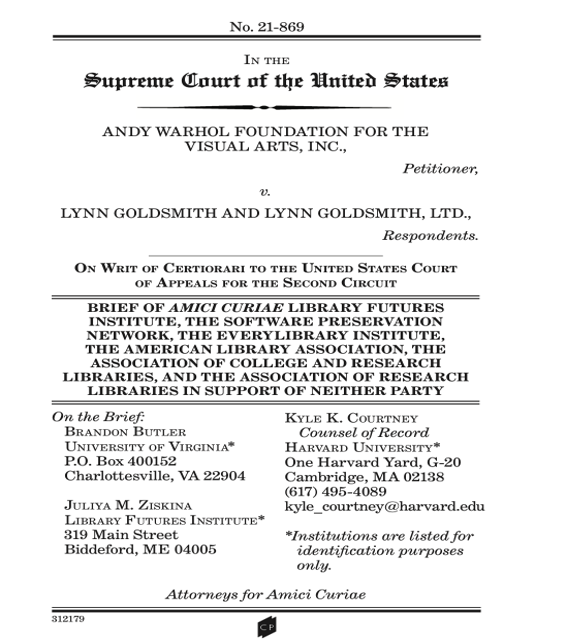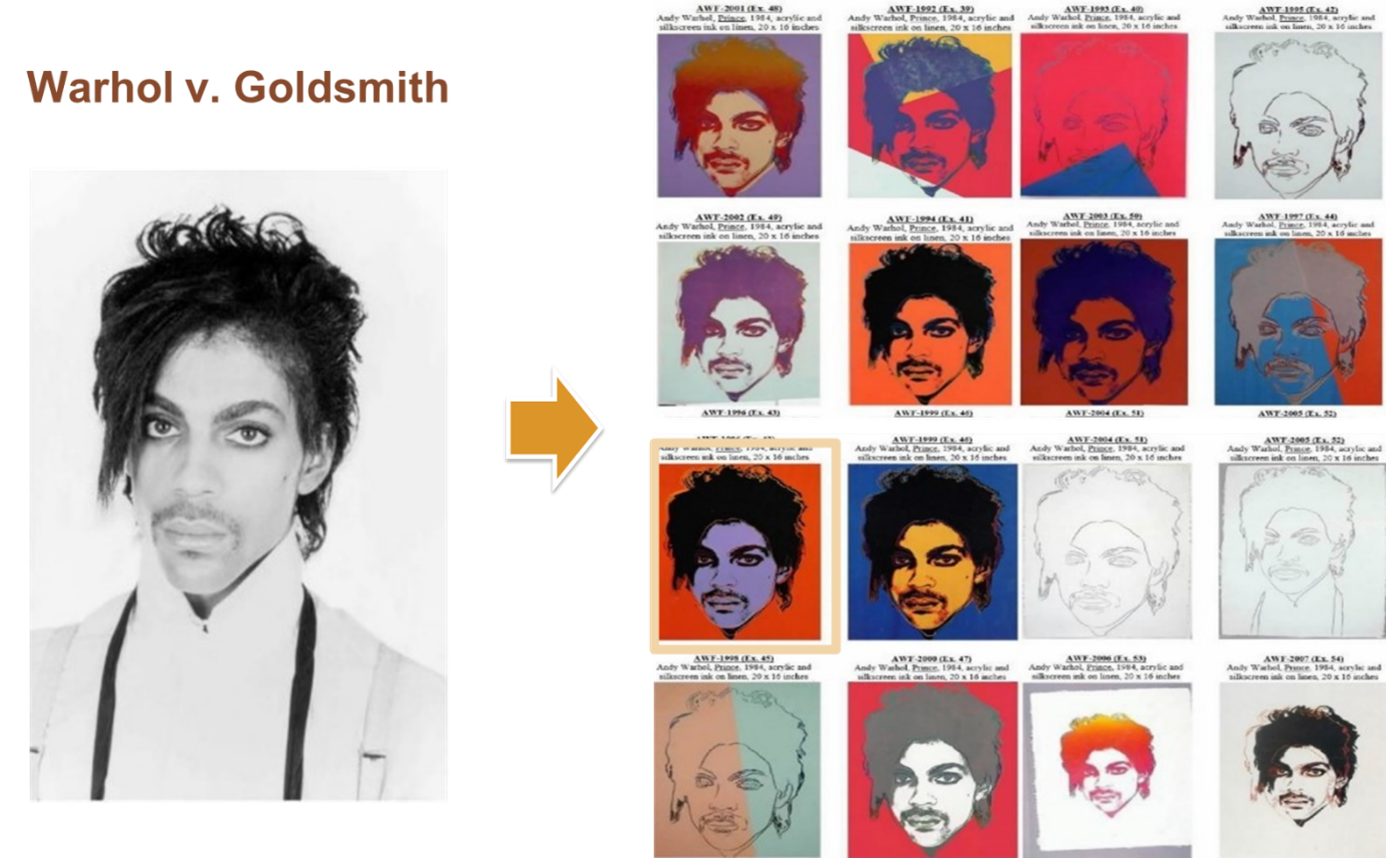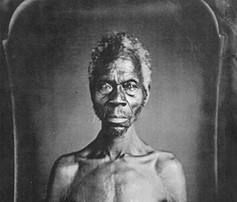Our last post of the glorious celebration on the final day of the 10th Anniversary of Fair Use Week is from copyright and open knowledge expert Will Cross. Will examines the Year of Open Science through the lens of fair use. – Kyle K. Courtney
Beyond An ‘Underpants Gnomes’ Theory of Copyright: Making Fair Use The Missing Piece for the Year of Open Science
by Will Cross

Fair Use Week is always a reason to celebrate, but I’m feeling especially excited this year due to some big news in copyright and open science – we’re finally saying no to the Gnomes!
This statement probably requires some explanation. As you may be aware, the US government has named 2023 the Year of Open Science and last week we celebrated the 21st anniversary of the Budapest Open Access Initiative. Along with recent recommendations on open science from UNESCO and ongoing work with projects like Plan S in Europe, the academy has never been more invested in, or more intentional about, opening up the scholarship, data, and educational materials we create.
Further, this commitment has undergone a fundamental shift from a simple focus on open access to the published scholarly record and towards a values-led commitment to sustainable systems of open knowledge. This shift from access to values is signposted by two memoranda from the White House Office of Science and Technology Policy (OSTP) released almost a decade apart. Where the 2013 Holdren Memo focused on removing paywalls for published research, the 2022 Nelson Memo is focused on holistic equity in both the publishing of and access to the record of scholarship. This is a significant change that recognizes that the growth of open access venues (often controlled by the same old for-profit publishers) has not led to more ethical modes of production or a more sustainable, inclusive system of scholarly sharing.
So, what does this all have to do with fair use? The answer is that, as our understanding of what it means to support openness has expanded from access to equity, our copyright literacy has not always kept pace. Copyright has always been a core competency for this work, whether it is called “open access,” “scholarly communication,” or “open science.” In the access-focused era of the 2000s, the copyright toolkit for scholarly communication focused on open licenses and rights retention, with an aim to move published scholarship beyond the paywalls controlled by for-profit publishers. Unfortunately, as our commitment to openness has expanded and evolved, the way we talk about copyright has often remained static. We’re trying to meet new, more expansive goals with the same old tools. And that’s where the Gnomes come in.
Readers of a certain age may be familiar with an old meme focused on a set of satirical characters called the “Underpants Gnomes” who have an unorthodox get-rich-quick scheme that is notoriously light on details. “Step one: collect underpants . . . Step two: ???? . . . Step three: profit!” This tongue-in-cheek framework of “do a thing . . . ???? . . . profit” has been a reliably irreverent way to describe any half-baked or ill-considered plan and has been used to satirize everything from privacy and antitrust law, to Web 3.0 business models, to ineffective football game plans.
 For too many open scholars the default attitude towards copyright has looked a bit like the Gnomes drew it up: “Step one: apply open license. Step two: ???? Step three: global knowledge equity!” As someone who has worked to support open knowledge for many years, I am deeply invested in authors’ rights and open licenses. But it is clear that simply adding a Creative Commons license does not by itself make our work better, more inclusive, or more impactful.
For too many open scholars the default attitude towards copyright has looked a bit like the Gnomes drew it up: “Step one: apply open license. Step two: ???? Step three: global knowledge equity!” As someone who has worked to support open knowledge for many years, I am deeply invested in authors’ rights and open licenses. But it is clear that simply adding a Creative Commons license does not by itself make our work better, more inclusive, or more impactful.
Without a commitment to bibliodiversity and equitable authorship, openly-licensed scholarship isn’t inherently more inclusive. Without clear information and values-led policy about ownership and use, open data isn’t inherently more ethical. Without shared values and a respect for agency, open education is not inherently more equitable. Adding an open license to materials is absolutely necessary but in no way sufficient to meet the goals of the open movement. The BOAI recommendations put a fine point on this issue: “open access is not an end in itself, but a means to other ends, above all, to the equity, quality, usability, and sustainability of research.”
If we want to use openness to meet those other ends, it is critical to fully engage with copyright. We need to be intentional about ownership and authorship so that we can respect the agency of all contributors. We need to take seriously the limitations built into the system so that we understand what is subject to copyright and what is free for anyone to use. Most of all, we need to understand and assert copyright exceptions like fair use and fair dealing. At every stage of the scholarly lifecycle those exceptions facilitate a holistic, values-driven approach to open science, from new forms of analysis like text and data mining to new pedagogies made possible through the Codes of Best Practice and broad sharing through models like controlled digital lending.
As a US-based scholar writing this post from Amsterdam as part of my Fulbright Fellowship on international copyright literacy I have been blown away by the shared mission and values of scholars and librarians in many nations and the tremendous work they are doing in reliance on these exceptions. For open science, fair use can and must be the missing ingredient that fills the gap between “open access” and “a global system of scholarship grounded in equity, quality, usability, and sustainability.”
Unfortunately, those Gnomes can be persistent. For many open scholars, the copyright aspects of their work still begin and end with rights retention and a CC license. For some, their hesitancy is grounded in copyright anxiety, or a sense that open licenses are an escape hatch that can free them from having to really understand the law. I’ve even had conversations with scholars who suggest that openly-licensing their work somehow disqualifies them from relying on fair use or fair dealing! Of course, nothing could be further from the truth.
Creative Commons licenses exist within and rely on the copyright system. Scholars much smarter than me have spelled out how fair use and fair dealing permit the inclusion of third-party inserts in most jurisdictions around the world. But even as UNESCO’s Recommendations recognize that open science “builds upon existing intellectual property systems and fosters an open approach that [relies on] flexibilities that exist in the intellectual property systems,” copyright training remains focused on the simplest version of author’s rights and open licensing (both ironically contract, rather than copyright, issues). Too often we’re talking about open knowledge without any serious discussion about fair use, fair dealing, or really about copyright at all.
So, as we celebrate Fair Use Week and the Year of Open Science, I hope you will take the opportunity to help make copyright in open science a bit less Gnomic. Open scholarship is not merely compatible with fair use; it requires a clear understanding of copyright, headlined by the ways that fair use and fair dealing can align scholarship with our values. Indeed, significant work is being done to support global shared copyright literacy in this area. Leading scholars like Tanya Aplin and Lionel Bently have argued that current treaties mandate a global right to quotation under fair use. The international Right to Research project is working to study changes needed in international copyright policy to ensure equity in the production of and access to research. In the EU the reCreating Europe project is currently releasing their final working packages.
In order to explore this issue and document the exciting new work the Journal of Copyright in Education and Librarianship is developing a special issue on Copyright in Systems of Open Knowledge. The call for proposals is currently open and, as guest editor, I would love to hear about your own work and help you develop an article. Whether you are creating open scholarship that relies on fair use, developing a training program that supports compliance with Plan S or the OSTP Memo, or advocating for changes in the law to make scholarship more inclusive and equitable, we hope you will share your stories. I know we can do so much better than following the Underpants Gnomes.
Will Cross is the Director of the Open Knowledge Center & Head of Information Policy at N.C. State University where he guides policy, speaks, and writes on copyright literacy and open knowledge. He recently served as a Hewlett-funded Open Education Fellow and as an instructor for the UNC SILS. As a course designer and presenter Will has developed training materials and workshops across the US and for international audiences from Ontario to Abu Dhabi. Will holds a law degree from UNC Chapel Hill, where he also earned his M.S. in Library and Information Science, his M.A. in Media Law & Policy, and his B.A. in Constitutional History and Dramatic Art. Will’s current research focused on the relationship between copyright literacy and open knowledge is supported by grants from the IMLS, the Hewlett Foundation, and LYRASIS. In the 2022-23 academic year he is conducting research on international copyright literacy practices as a Fulbright Schuman Innovation Fellow based in Amsterdam and working with peers across the EU.



 Much of my professional career has been spent supporting reserve services and answering questions about the related copyright issues. I’m excited to share that in the fall of 2022 I published book on this very topic,
Much of my professional career has been spent supporting reserve services and answering questions about the related copyright issues. I’m excited to share that in the fall of 2022 I published book on this very topic, 




 Fair use, Section 107, which has long been the hero of the Copyright Act by allowing libraries to advance their services and provide remote access to users under certain conditions. During the pandemic, the
Fair use, Section 107, which has long been the hero of the Copyright Act by allowing libraries to advance their services and provide remote access to users under certain conditions. During the pandemic, the 